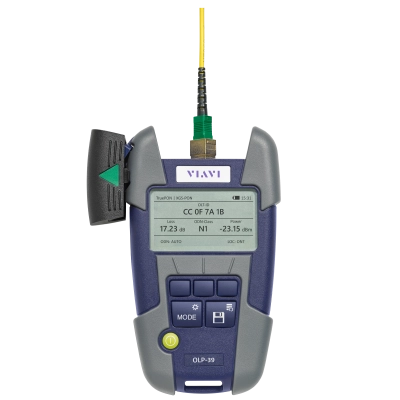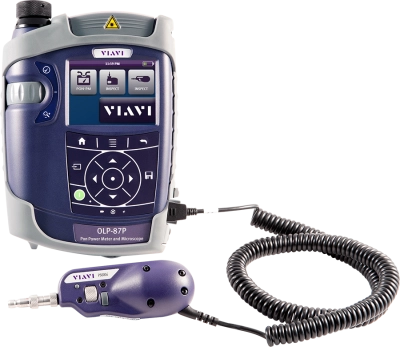What is XGS-PON?
Learn everything you need to know about XGS PON, the latest standard for Passive Optical Networks.
XGS-PON is an updated standard for Passive Optical Networks (PON) that can support higher speed 10 Gbps symmetrical data transfer and is part of the family of standards known as Gigabit-capable PON, or G-PON. G-PON stands for Gigabit PON or 1 Gigabit PON. The “X” in XGS represents the number 10, and the letter “S” stands for symmetrical, XGS-PON = 10 Gigabit Symmetrical PON. An earlier, non-symmetrical 10 Gigabit PON version (XG-PON) was limited to 2.5 Gbps in the upstream direction.
PON technology originated in the 1990’s and has continued to develop through multiple iterations with differing wavelengths, speeds and components emerging as the technology has improved. The common denominator of all fiber optic PON networks remains the unpowered or passive state of the fiber and its splitting or combining components, i.e. no active elements such as optical amplifiers, which would require power, are present in the network. With streaming, high definition, 5G and other emerging technologies continually pushing bandwidth demands, the development of XGS-PON and other standards has proven to be essential.
Simultaneous upstream and downstream transmission over the same fiber is made possible through wavelength division multiplexing (WDM). This technology allows one XGS-PON wavelength or color of light transmission for upstream and another for downstream.
Standardized PON deployment and operation has been accomplished since initial adoption through the International Telecommunication Union (ITU) standards for the G-PON family and through the Institute of Electrical and Electronics Engineers (IEEE) standards for Ethernet PON or “EPON”. The new XGS-PON standard was released in 2016 and designated as Recommendation ITU-T G.9807.1.
The scope of the new standard defines XGS-PON as 10-Gigabit-capable symmetric passive optical access network for residential, business, mobile backhaul and other applications. To create a comprehensive standard for this symmetrical 10-Gbps evolution of G-PON, elements of the earlier XG-PON physical layer standard were utilized, meaning the same optical transceiver components can be used for either XG or XGS-PON. Protocol layer standards have also been leveraged for the NG-PON2 standard, ITU-T G.989.3.
Although the physical fiber and data formatting conventions for XGS-PON technology remain unchanged from the original G-PON standard, the wavelengths have shifted. XGS-PON operates at a downstream wavelength of 1577 nm and the upstream wavelength of 1270 nm. The main reason for this is to allow multiple PON services to co-exist on the same PON and allow for seamless service upgrade/migration or to allow different service providers to use the same PON or to offer different levels of service (e.g. business verses residential). The wavelengths for XGS-PON differ from other standards such as G-PON and NG-PON2, although the overall PON transmission window of 1260 to 1650 nm is capable of accommodating G-PON, XGS-PON and NG-PON2 standards over the same fiber network simultaneously. As XGS-PON was an update to the XG-PON standard in order to deliver symmetrical capacity, XG and XGS-PON operate at the same wavelengths upstream and downstream, this is the only case where there is reuse of the same wavelengths. Today the majority of operators looking at deploying 10G services opt for XGS-PON.
The evolution of PON networks has necessitated improvements and adaptability in PON testing tools. Traditional fiber testing tools including OTDR, light sources and broadband power meters can be utilized effectively but can have limitations. For example, broadband power meters cannot be used to measure downstream optical power level if there is more than one wavelength of light present, this could be due to RF video being overlaid (broadcast) over the same PON or due to multiple PON services co-existing on the same PON (like G-PON and XGS-PON). Downstream wavelengths are continuously broadcast which makes measurement easier however, as the physical upstream path of a PON is shared a Time Division Multiplexing (TDM) approach has to be adopted for upstream wavelength transmission resulting in bursty upstream traffic. In addition, a ONT device in a subscribers premises will only respond and transmit upstream if it can receive the downstream wavelength first, so measuring upstream power also requires a tool that supports both burst mode measurement and through-mode operation.
Dedicated PON power meters are useful and versatile tools for determining if upstream and downstream launch power meets specification, whether optical insertion losses exceed system limits and are acceptable per the standard. Since the use of different transmission wavelengths is a key component of XGS-PON technology, equipment capable of filtering and selecting the appropriate wavelengths to measure is a must. VIAVI PON power meters measure wavelengths and address PON testing challenges by providing wavelength-selective power measurement, some als0 with through-mode capability, suitable for live network service activation or troubleshooting.
SmartPocket V2 OLP-39 TruePON Tester
A TruePON tester is wavelength selective Passive Optical Network (PON) power meter enhanced with TruePON PON-ID analysis. Wavelength selectivity ensures that an individual downstream wavelength is measured accurately in order to prevent borderline installs. The ability to simultaneously measure individual PON wavelengths is absolutely necessary when you have multiple services present on the same PON, in a co-existence model, as part of a service upgrade or migration plan. TruePON PON-ID analysis provides OLT port serial number, ODN Class and OLT downstream transmit power for G-PON and XGS-PON services. OLT serial number enables techs to confirm or find the correct drop port where a customer’s service has been provisioned and prevents time wastage while a service is re-provisioned to another OLT port. Reading OLT transmit power enables in-service loss measurements to avoid borderline installs or to troubleshooting existing installs to identify the cause of low power levels. The SmartPocket V2 OLP-39 TruePON testers are easy to use, dedicated and cost-optimized solutions for testing, installing and troubleshooting G-PON and XGS-PON services, while the rugged and compact form factor is ideal for field use.

SmartClass Fiber OLP-87 PON Power Meter
Symmetrical transmission over PON networks makes combined downstream and upstream testing a beneficial strategy for PON activation, troubleshooting or maintenance activities. The SmartClass Fiber OLP-87 PON Power Meter has been designed for simultaneous upstream and downstream testing of B/E/G-PON services including XGS-PON, 10G EPON or NG-PON2. The equipment features an advanced and versatile wavelength-selective power meter and through-mode capability (including upstream burst mode support) to simultaneously measure multiple up and downstream wavelengths. Integrated fiber inspection capability also enables quick and easy fiber end-face inspection and certification, with reports conveniently and reliably saved for on-demand recall.
XGS-PON vs NG-PON2
The NG-PON2 standard is viewed by some as the next logical step in increasing service and network capacity, but it brings inherent challenges along with enhanced potential. NG-PON2 uses time and wavelength division multiplexing (TWDM) to allow four or more 10 Gbps transmissions over the same fiber simultaneously for a total symmetrical capacity of 40 Gbps. This technology differs significantly from XGS-PON, which, like the iterations of G-PON that preceded it, operates at dedicated upstream and downstream wavelengths. While the bandwidth potential for NG-PON2 is impressive, this technical leap requires multiple fixed or tunable optics at both ends of the line that are not necessary for XGS-PON deployment, meaning a higher initial cost of deployment.
TWDM utilization creates variable wavelength capability for NG-PON2, the ranges of upstream and downstream wavelengths allocated per the NG-PON2 standard do not overlap with either XGS-PON or G-PON dedicated wavelengths. This distinction permits overlays of NG-PON2 service on existing G-PON or XGS-PON installations. Both NG-PON2 and XGS-PON utilize higher/longer (>1550 nm) downstream wavelengths that are inherently more susceptible to power loss due to fiber macrobending attenuation.
XGS-PON OLT
For all PON standards including XGS-PON, the starting point is the optical line terminal (OLT) installed in a service providers local office. The OLT is the active (powered) hardware used to convert and transmit data from the service provider and coordinate multiplexing of the optical network terminals (ONT) end of the network. The XGS-PON OLT broadcasts the same data to all ONT in the network due to operation of the passive downstream optical splitters. It is up to each ONT to determine which data is intended for them. Virtualized OLT can be programmed to deliver traffic over multiple PON technologies such as XGS-PON and NG-PON2 with the same hardware used for added flexibility. OLT split ratio flexibility allows a single XGS-PON OLT to operate multiple PON optical distribution networks (ODNs).
XGS-PON SFP
The Small Form-factor Pluggable (SFP) is a hot-swappable transceiver connected to the SFP port of a network switch which converts electrical signals to optical signals at the chosen wavelength, and vice versa. SFPs used to facilitate XGS-PON transmission must be designed to support 10 Gbps speeds and support simultaneous upstream Tx and downstream Rx through the use of internal WDM couplers. Despite the small form factor, XGS-PON SFPs utilize advanced electronics to stabilize output power during upstream transmission.
XGS-PON ONT
Through the use of single or cascaded optical splitters the OLT downstream wavelength can be split to provide service to as many as 128 end devices (ONT). The IEEE, which created the equivalent E-PON and 10G-EPON standards, refers to the ONT as the optical network unit (ONU).
Recent innovations in packaging, optics and chip design have dramatically reduced 10G ONT cost to levels approaching that of 1G ONT/ONUs. Economies of scale will continue to drive efficiencies as XGS-PON deployment accelerates. More flexibility has also been integrated into newer generation XGS-PON ONTs, so that FTTH, business and 5G applications can share more common hardware elements.
The symmetrical 10 Gbps speed and compatible architecture of XGS-PON has made it a viable option for high-speed data, voice and Internet requirements for years to come. Services like video conferencing, gaming and cloud storage are all gaining popularity, making the demands on upstream delivery speed equally relevant.
Other applications such as 5G front/mid-haul can also reap the performance and efficiency benefits of symmetrical XGS-PON. Since XGS-PON can co-exist on the same fiber plant as G-PON without changes to the passive architecture and is capable of higher split ratios, it provides a logical and cost-effective expansion option. NG-PON2 deployment can raise the speed and bandwidth bar even higher, provided the more stringent optical loss and tunable transceiver requirements can be met.
The value of PON has been proven out for over twenty years based on simplicity and backwards-compatibility. XGS-PON has continued this legacy while pushing the envelope into new and unprecedented territory.
